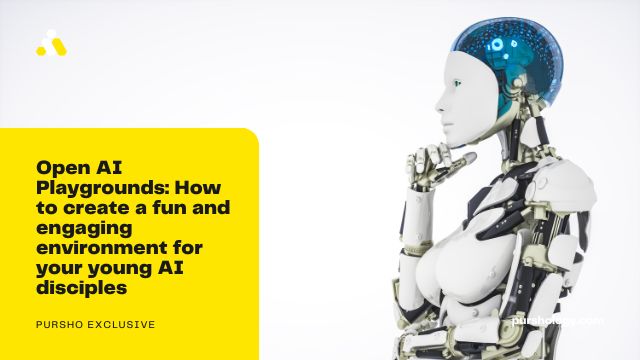Open AI Playgrounds is a great way to engage your young AI disciples and teach them about artificial intelligence technology. You can use this environment to learn about different aspects of AI, such as programmable robots and machine learning. Open AI Playgrounds will also help you develop your skills in programming, data science, and artificial intelligence.
How to Create an Open AI Playground.
Open AI playgrounds are websites or applications that allow users to create, test, and explore different AI functions. They can be used for educational purposes or for recreational purposes.
There are a variety of open AI playgrounds available on the web, but some of the most popular ones include Google Earth and Minecraft.
How to Create an OpenAI Playground.
To create an Open AI playground, you first need to create an account on one of the platforms mentioned earlier. Once you have an account, you can then use the tools within the platform to create your playground. The following steps will give you a basic overview of how to create an Open AI playground:
1. Choose a project that needs your help
Some open AI playgrounds are designed specifically for training and testing artificial intelligence algorithms – such as Google Earth or Minecraft – so it’s best to start with something specific in mind before creating a playground for all other tasks. However, there are plenty of other projects out there that can be used in OpenAI playgrounds (including those not specifically designed for training and testing AI). Just make sure you do your research ahead of time so you know what needs attention before starting anything!
2. Set up your environment
Once you’ve chosen your project and set up your environment (either using pre-made templates or creating custom designs), it’s time to get started! In this step, you’ll need to decide on the features and functionality that will need to be included in your OpenAI playground. For example, if you want your platform to allow users to test various AI algorithms, then you might choose to include support for this functionality in your environment. Additionally, if you want users to be able to interact with each other directly through chat rooms or forums, then it would make senseto include these features too. If all else fails, there are always online resources that can be helpful when setting up an OpenAI playground (like this one).
Open AI Playgrounds: What You Can Do.
The first step in creating an Open AI playground is to determine what type of game you want to play. There are a variety of games that can be used to teach Open AI, including strategy games, problem-solving games, and more. To find games to play, check out websites like BoardGameGeek or Gamezebo. You can also search for open-source games on Github or search for specific game genres on Google Play.
How to Find Games to Play.
Once you have a game idea, it’s time to start finding games to play. Look through online forums and chat rooms for suggestions, or visit game stores and ask staff about any available titles. Once you’ve found a few good titles, upload them to your own website or blog so that others can enjoy them as well!
How to Create a Game.
Once you’ve found some great playable games, it’s time to create them! This process involves uploading the game codebase and providing enough information about the game so that other developers can build upon it and create their own versions of the game. You can use coding languages like Unity or Unreal Engine 4 to create your own Open AI playgrounds.
How to Use Games To Teach Open AI.
Not all games need players; sometimes they can be used just as training exercises for your disciples! When playing a single-player game, make sure you provide clear instructions on how players should approach objectives and puzzles in order notify them incorrectly when they shouldn’t be playing—this will help train your disciples on how not too screw up their first steps into learning OpenAI!
Tips for Creating a Fun Open AI Playground.
One way to keep your disciples entertained is to create fun and challenging puzzles. Use AI games to teach them about open AI and its various functions. For example, you could create a game in which your disciples have to solve a series of problems in order to advance. Or, you could offer them challenges in real life – for example, offering them a quiz on Google Earth or trying to find a specific object hidden behind some obstacles in a photo shoot.
Use Open AI Games to Teach Open AI.
In addition to Puzzles, another fun way to engage your disciples is by playing OpenAI games. These games can help students learn about different aspects of open AI, such as its programming capabilities or how it can be used in actual applications. In some cases, the games are designed specifically for training purposes – so that you can get your disciple practicing complex open AI code quickly and easily! Subsection 3.3 Use Open AI Tools to Teach OpenAI.
If you’re looking for more ways to engage your disciples, then using open AI tools may be the best solution! With these tools, you can create beautiful simulations or models that demonstrate various aspects of open AI functionality – perfect for teaching your disciples about the inner workings of this cutting-edge technology!
Conclusion
Creating a fun Open AI Playground is essential for your disciples to enjoy. Use puzzles, open AI games, and other tools to interest them and keep them engaged. By completing tasks and playing games with your disciples, you can help teach them about Open AI and its many applications.







